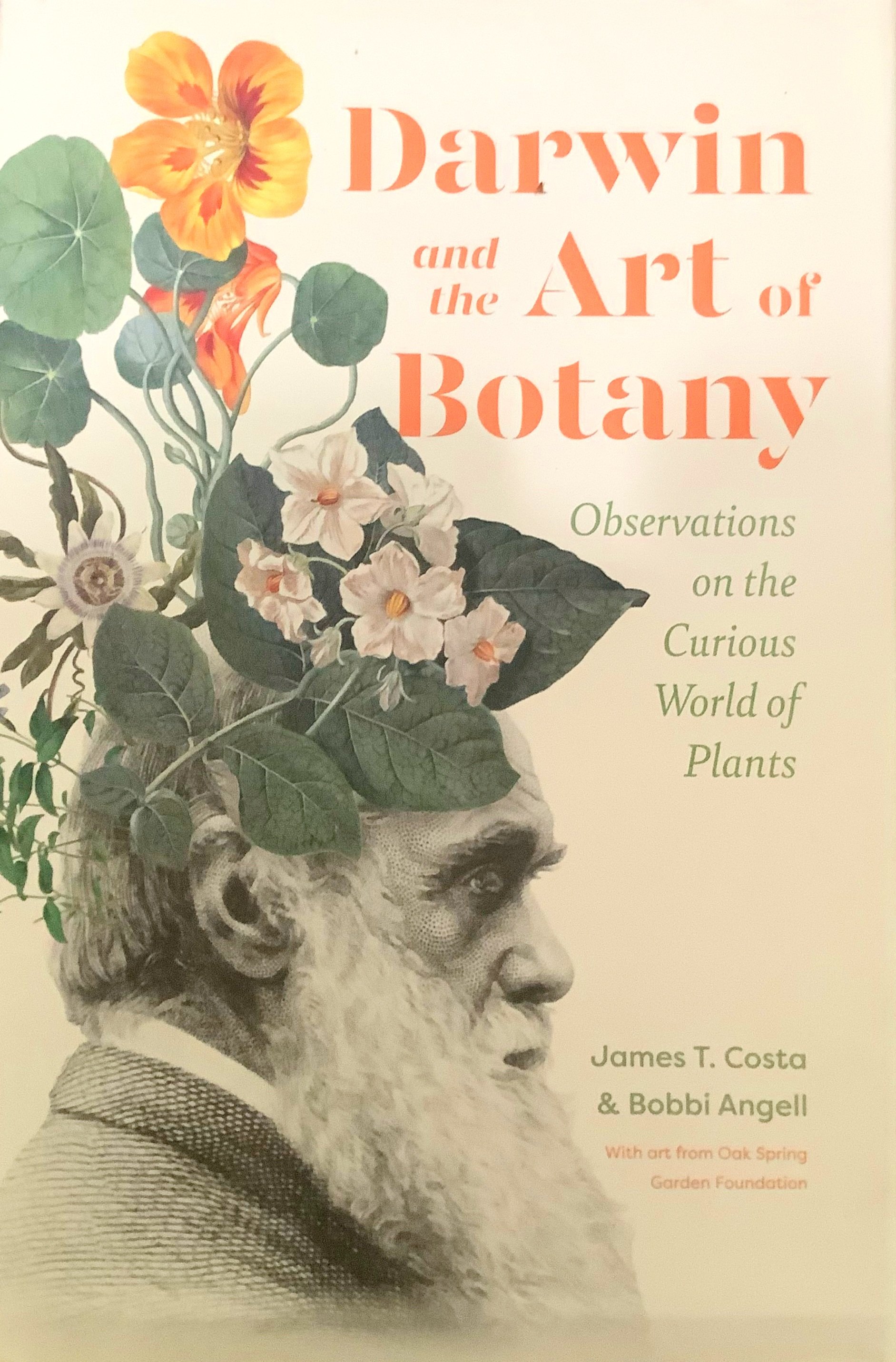A Love of Plants That Transcends Time
OSGF
Every year on August 9th, we honor our founder Rachel Lambert Mellon on her birthday. Born in 1910, today is 113 years since her birth, but the legacy of her life lives on through the Oak Spring Garden Foundation, the organization that she established to perpetuate her love for plants, gardens, and landscapes.
Plants, books, and art were three passions at the center of Mrs. Mellon’s life, and they came together in the astonishing library that she assembled over nine decades, that is now housed in the unique building that she created at Oak Spring. Mrs. Mellon’s library is at the center of much of the work at the Oak Spring Garden Foundation and later this year some of the beautiful illustrations in her library will be highlighted in a new book ‘Darwin, and the Art of Botany’ by renowned botanical artist Bobbi Angell and acclaimed biologist and historian of science Jim Costa.
Charles Darwin’s studies changed forever the way we look at plants, including how and why vines climb, the digestive processes of carnivorous plants, and especially the intricacies of how flowers function and how pollination works. However, the several books that Darwin wrote are illustrated with just a few small black and white prints from wood engravings. In ‘Darwin and the Art of Botany’ Darwin’s botanical subjects are brought to life in a new way using illustrations from the library at Oak Spring. Just before the covid pandemic Bobbi Angell scoured Mrs. Mellon’s collection for illustrations of the plants that Darwin studied. These are now presented in a single volume that brings together Darwin’s key insights with remarkable period color illustrations of the plants that he studied.
Darwin pointed the way to a deeper understanding of how flowers work, and the functional features underlying their complex beauty and structure. He established the central ideas for understanding how flowers evolved. But the physical record of floral evolution, as revealed by their fossil history, has only begun to emerge in the last 40 years. The leader in this work has been the Danish scientist Professor Else Marie Friis, who together with her long-time collaborators Dr. Kaj Raunsgaard Pedersen and Professor Sir Peter Crane, President of the Oak Spring Garden Foundation, have conducted some of their recent work at Oak Spring.
The renowned botanical artist Bobbi Angell. Photograph courtesy of Bobbi Angell.
Professor Else Marie Friis, pioneer in the study of fossil flowers. Photograph courtesy of Else Marie Friis.
The opportunities to study truly ancient fossil flowers were first recognized in pioneering research by Professor Friis in the early 1980s. Since then, many fossil flowers have been described by Friis, Pedersen and Crane that date from the earliest phases of flower evolution between 120 and 100 million years ago. Several sites in Portugal and on the coastal plain of Virginia have rocks of the right kind and the right age to preserve ancient fossil flowers, and some of the most informative have been discovered in samples of ancient clays collected near Petersburg, Virginia.
Artist’s reconstruction of a flower of Racheliflora virginiensis. The flower is less than a sixteenth of an inch across. The structure is accurate, but the color is imaginary. Drawing by Pollyanna von Knorring.
Earlier this year one of these newly discovered fossil flowers was described and given the scientific name Racheliflora virginiensis, in honor of Rachel ‘Bunny’ Lambert Mellon. Well preserved but known from just three tiny ancient flower buds, the fossils were studied using advanced X-ray imaging at the Swiss Light Source, a synchrotron facility in Switzerland. The X-ray images reveal what the different parts of the flower looked like and make possible an accurate artists reconstruction; only the color is left to the imagination.
Careful studies by Friis, Pedersen and Crane show that the flower is related to modern day sweetshrub illustrated here by an exquisite print of the living Chinese species Calycanthus chinensis by Bobbi Angell and a photograph of a horticultural selection of the eastern North American species, Calycanthus floridus. Although beautifully preserved the buds of Racheliflora are less than 2 mm across, tiny compared to flowers of its living relatives. Beyond sweetshrub, Racheliflora is more distantly related to pawpaw, magnolia, and sassafras.
A print from a copper etching by Bobbi Angell of the Chinese species of sweetshrub (Calycanthus chinensis) a near living relative of Racheliflora virginiensis and one of three living sweetshrub species. The other species are the California sweetshrub (Calycanthus occidentalis) from western North America and the Carolina sweetshrub (Calycanthus floridus) from eastern North America. Photograph courtesy of Bobbi Angell.
One of many horticultural varieties of Carolina sweetshrub (Calycanthus floridus), a near living relative of Racheliflora virginiensis, with a flower almost three inches across. Photograph Peter Crane.
Studies of these ancient fossils, completely unknown to Darwin, help us understand how plants with flowers have transformed the world over the past 130 million years and how they have contributed to creating the global ecological systems that sustain us all. We all depend on plants and the energy that they harvest from the sun. As we celebrate Mrs. Mellon on her birthday, we also celebrate her love of plants and her vision in establishing the Oak Spring Garden Foundation. Mrs. Mellon understood the importance of plants and the Oak Spring Garden Foundation was her way to help ensure that they are never taken for granted.






